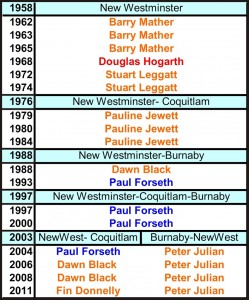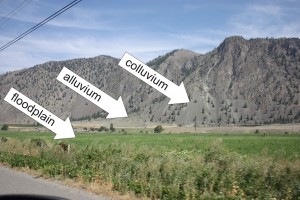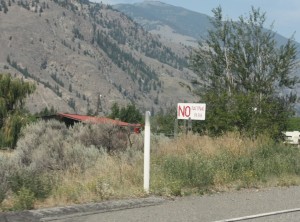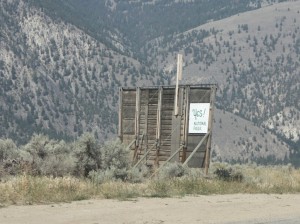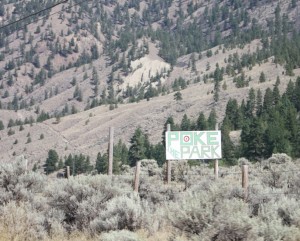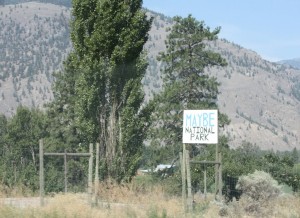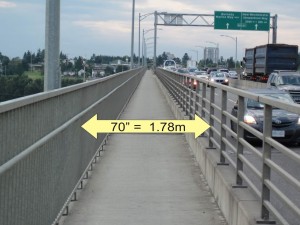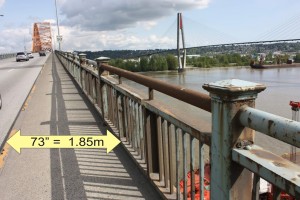Here is an issue where I just don’t know what to think yet.
It appears that the proposal for redistribution of Federal Electoral Ridings will bring to an end the two ridings New Westminster shares with Burnaby (on one side) and Coquitlam and Port Moody (on the other). This is nothing unusual, something the Federal government does every decade or so, in a quasi-non-partisan way.
The current proposal sees the number of MPs going up to 338, and for New Westminster to comprise its own single Electoral Riding, except for Queensborough, which will be globbed as an after-thought onto the Eastern (and dominantly rural) part of Richmond (more on that below).
For those with short memories, New Westminster has only recently become a two-riding City. It was only 9 years ago (see what I mean by “decade or so”?) that the Burnaby-New Westminster-Coquitlam riding represented by Reform-vaa-Canadian Alliance-vaa-Conservative MP Paul Forseth was split into more manageable bite sizes, opening the door for Peter Julian to take the Burnaby side and (eventually) Dawn Black to take back the Coquitlam side. It wouldn’t be a surprise to most, however, that aside from Forseth’s inexplicable 11 year reign, New Westminster has been mostly federal NDP territory since the burgeoning of the Party itself.
Here is a short summary of New Westminster federal politics over the last 50 years (orange=NDP, Red=Liberal, Reform-Conservative=blue):
For someone more cynical than me, the plan to split New Westminster down the middle in 2003 might have been an attempt to split up the NDP stranglehold on the riding, by splitting the vote in half to be watered down by the more Conservative (or Liberal) Coquitlam and South Burnaby. The same cynic would suggest the re-amalgamation is an admission of defeat, with the hope that all of the NDP support can be concentrated in one Riding. But I’m not that cynic.
My first reaction to the entire redistribution project is that the last thing Canada needs is more MPs stuffed into the current system. The unrepresentative first-past-the-post system, combined with a new era of hyper-partisanship and the morphing of MPs from representatives of their constituents to representatives of the Party, removes any practical or realistic value to having MORE MPs. If there was a 10% increase in MPs related to some sort of proportional representation system, then there may be a cost-benefit issue worth exploring. As it is, we are just entrenching the current system deeper. Alas, maybe I am a cynic.
That said, I think New West is well served by our two MPs. If this change goes through, I suspect that Peter Julian would migrate to the New Westminster riding, as Fin Donnelly is more closely associated with Port Moody (where he was a City Councillor for several terms) and Coquitlam (where he lives and his office is). So my comments below are working on the assumption that it would align that way.
First the good:
• I can vote for Peter Julian! Peter is a great critic, a good representative, and a hell of a nice guy. I have had the opportunity to chat with him a couple of times, socially a few times, and once on a significant issue (Bill C-38 and Fisheries Act changes), and have found him knowledgeable, concerned, and helpful. On the national stage, he has been a force in the Commons and out, one of the most outspoken and well-informed critics of the Harper government. He is not currently my MP- by about 150 feet, but I would vote for him given the chance – and that is nothing against Fin (see “bad” below).
• I can vote against Paul Forseth. During the last federal election, Forseth was the least appealing candidate. A Reform lifer who couldn’t get out of the “us against the socialists” rhetoric long enough to have an actual conversation. His final-week campaign literature, accusing the NDP of facilitating the abduction/rape of children, was disgusting, indefensible, and cynical. I will proudly vote against that type of politics every chance I have.
• Having New Westminster’s interests represented by a single MP, without needing to balance New West’s interests with that of the “other half” of the riding, might mean a constituency office in New West, and a stronger New West-centric voice in Ottawa. I have met with Peter and Fin on issues, and have found both approachable and attentive, so perhaps this not as significant concern, but New West is a relatively cohesive community, it would be nice to have one community Representative in Ottawa, without wondering which side of 8th Street your issue is on.
Now the Bad:
• Less representation for New West. This may be the other side of the last paragraph, but perhaps two MPs from New West is better than just one. Does this “increase our voice” in Ottawa? Provide better access to constituent services? I might be tilting at windmills here.
• Not being able to vote for Fin. He is a bright light in the party: well spoken, likeable, clear on issues. A relative new-comer to the fed politics, he has lead some good campaigns. As an advocate for fisheries ecology and the fishing industry, Fin is a great representative for a City on the banks of the Fraser River. He has also taken an active role in a couple of issues of local interest that are only peripherally “federal”: he met with the NWEP over the UBE issue (trying to “bridge” the communications between his two constituencies), and spoke to the press on the topic of the Pattullo Bridge. Fin may even be in a bit of battle in more conservative Coquitlam without the NDP-friendly New West vote, having only beat Diana Dilworth by 6 points last election, and that would be a loss for Ottawa, not just New West.
• Not being able to vote for Diana Dilworth. She is friendly, smart, personable, and a great listener who seems to have a good grasp of issues and how to relate them to people. I was very impressed with Diana last election, and think she would be a great representative of the riding to any party that actually allows their MPs to represent their constituents (in other words, her talents would be wasted in the current Conservative party). Maybe she should run for the Liberals.
• Fewer Candidates for our Meet & Greet. Last federal election, we had 9 candidates show up for the NWEP – NEXTNewWest meet-and-greet event. With just one riding, that will cut the number in half, making for a less fun event. OK, a minor complaint in the grand scheme of things, but we just got that format worked out, and want to see it continue!
Notice I did not mention Queensborough in the discussion above. I think the “Queensborough question” needs to be addressed separately from the rest, with its own goods and bads. I would love to hear more from Queensborough residents. It seems they are often feeling separated, “cast off” from the mainlanders, getting the short end of the tax and services stick, and perhaps suffer from a bit of a persecution complex about being off the minds of the “Rest of New West”.
At the risk of paraphrasing an old Liberal slogan “My New Westminster includes Queensborough”.
I wonder if this will further increase the real or inferred rift. It might depend on which way East Richmond goes, as it is likely to have a new Representative (the exisiting MPS going to the other re-adjusted ridings). I can see an argument that in areas of federal jurisdiction (ports, agriculture, fisheries act, etc.) Queensborough may have more in common with East Richmond that it does with the Rest of New West, so perhaps their interests are better served having a more in-tune MP? What happens if East Richmond elects a rep from a different party than the Rest of New West? That might be a good thing, or might deepen the rift. Too many uncertainties here, but I want to make the link between Queensborough and the Rest of New West stronger, not weaker.
I hope many of the regular Queensborough community voices will sign up to comment to Elections Canada about this change, for or against it. The City has taken an official position (against it), but I sometimes wonder how in tune they are with Queensborough, based on the tone of the conversation I hear from over there.
If you have an opinion, and would like to present it officially to the Electoral Boundaries Commission, you will have your opportunity on Wednesday, Sept. 26 (7 pm at the Inn at the Quay) but you need to sign up ahead of time. You have until the end of day tomorrow to submit this form.
I have already signed up, in the event I come up with a coherent position on the issue in the next month.
